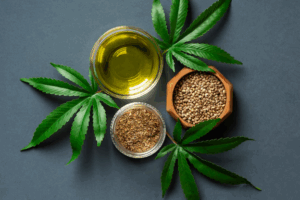Trainwreck Kratom: What It Is & Why People Love It
If you’ve explored the world of kratom, you’ve probably come across Trainwreck Kratom — a name that’s bold, a little mysterious, and often mentioned by

Picture this classic scene: A mother is cooking and preparing breakfast, the table is already set. Two bouncing little children come down the stairs, they each grab an apple and run out the door to the bus stop. The father comes down the stairs next, tying his tie, “Honey, I’m running late to my meeting! I need my pick-me-up!” The pot is already boiling, and the mother pours her husband a nice, hot, to go cup of … Kratom.
If you’re anything like myself, or millions of Americans, the first thing you do when you wake up is grab a cup of coffee. This international tradition of early morning coffee drinking has permeated every facet of society and culture. But if you’re also like me, the sugar, the milk, and the caffeine constantly has me looking for healthier alternatives. I tried “healthy” energy drinks, juices, and snacks but nothing has the same kick as coffee. So with my alternative options running out, I decided to take Don Corleone’s advice, and keep it in the family. What I found was salvation in coffee’s natural cousin – Kratom.
The plant family that contains both coffee and Kratom is the Rubiaceae family. The Rubiaceae family is more commonly referred to as the coffee, madder, or bedstraw family. There are more than 13,500 species and within 650 genera in the Rubiaceae family, making it the fourth-largest family in the angiosperm class. Varying alkaloid combinations are one of the key distinctions between each member of the family. Plants in the Rubiaceae family grow all over the world, but the most abundant species diversity is concentrated in the tropics.
The family, which contains coffee and Kratom, has many smaller divisions. Kratom is related to some other members of the Rubicae family, like Quinine, have been used in traditional medicine. Quinine comes from cinchona bark and is an antimalarial alkaloid that has saved thousands of lives.
What does this mean? Generally, what region Kratom plants are grown affects it very little. Whereas coffee, on the other hand, can have significant differences based on what species of the coffee bean is grown.
Just like human families, members of the Rubiaceae family come in all kinds of shapes and sizes. Coffee and Kratom, for example, look very different. Kratom comes from a tropical evergreen tree. It has broad leaves with a traditional “leafy” shape, as in the leaves are whole, not needley or divided. Mitragyna speciosa trees do not create fruit, but they do create little clusters of flowers at the end of their branches.
Coffee trees tend to be much smaller than Kratom trees and produce harvestable material per tree than their larger cousins. Coffee beans, from which coffee is derived, are seeds housed in the fruit of the plant flowers. Because coffee comes from mature fruits, harvesting the coffee beans can be tricky since the fruits need to be ripened properly before harvest.
It’s common knowledge that coffee produces stimulant-like effects called caffeine. Caffeine is an alkaloid which produces euphoric effects. Kratom produces a lesser-known alkaloid which provides similar effects as caffeine, called Mitragynine. But unlike caffeine, Mitragynine typically does not give you “the jitters” like coffee does.
Coffee and Kratom come from two different regions. Coffee originated in Africa but later was produced all over the world. Kratom originated in southeast Asia and continues to be cultivated there. Indonesia is the world’s largest Kratom producer, and exports Kratom all over the world. It is possible that one day, since Kratom is growing in popularity in the West, more countries will start growing and exporting Kratom, as happened with coffee.
Humans have been consuming Kratom a lot longer than they’ve consumed coffee. For many centuries, people in South East Asia have been using Kratom for it’s more stimulating qualities. Coffee on the other hand, doesn’t have the same history of traditional use and didn’t make a significant impact on the world until about the year 1500. Once coffee first started gaining popularity, it experienced similar fear-mongering that Kratom is facing now. Ethnocentric beliefs and distrust of foreigners made a lot of Europeans skeptical of the new beverage. Sound familiar?
So if you’re a coffee-bean freak trying to find an easy alternative, look no further than Club13’s invigorating strains of white Kratom. Our Indo White and Maeng Da White Kratom powders are the perfect pick me up to get your gears running. All the best parts of a Rubicaean plant, with none of the teeth staining or ulcers!
If you’ve explored the world of kratom, you’ve probably come across Trainwreck Kratom — a name that’s bold, a little mysterious, and often mentioned by

What Is Kratom Seltzer? Everything You Need to Know Move over, hard seltzers — a new kind of botanical brew is making waves. Kratom seltzer

Top 7 Kratom Capsules That Work (And Where to Get Them) With the growing number of kratom brands entering the market, finding quality capsules you
Why Red Maeng Da Kratom Is the #1 Choice for Daily Buyers In the world of kratom, Red Maeng Da is one of the most

Plants like Kratom and CBD have received significant attention in recent years for their potential to improve overall wellness. As these two substances continue to